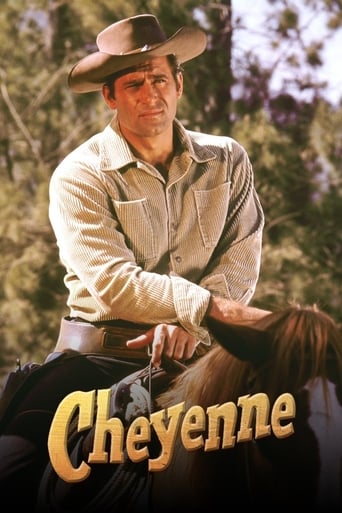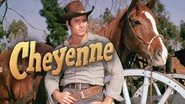SimonJack
The TV series, "Cheyenne," was one of several Western themed weekly programs on television in 1950s America. Its success and that of so many others like it in that decade seemed almost assured. Many children of the 1940s grew up with Western matinée movies at local theaters. Those were the days before TV took off five years after the end of World War II. I recall vividly my frequent Saturday bicycle rides with my brother or neighborhood friends to the Swan Theater in Columbus, NE. Those kids' matinees cost just nine cents, and that left a penny out of our dime for a bag of popcorn. Most of the matinée movies we saw weren't new. They were films from the past decade or more that we probably hadn't seen. When a new Western movie came out we might get to see it at an evening showing at the bigger Columbus Theater. Of course, the price there was 20 cents and popcorn cost a nickel. But we kids were happy with the matinees following the adventures of Hopalong Cassidy, Gene Autry, Roy Rogers, John Wayne, the Cisco Kid, Lash Larue and the Lone Ranger. With the rapid rise of TV at the start of the 1950s, the movie houses began to see a steady decline in audience numbers. And, those daytime Western entertainers of the past were getting into the new medium as well. The Gene Autry show aired from 1950 to 1955, and the Roy Rogers show ran from 1951 to 1957. Hopalong Cassidy had a TV series from 1952-54, and the Cisco Kid was a favorite TV series from 1950-56 starring Duncan Renaldo. The Lone Ranger, who was played by different actors in movies, as was The Cisco Kid, had a long-running TV series from 1949-57, with a 30-minute weekly show that starred Clayton Moore. It ran for 221 episodes. Moore also starred in the 1956 feature length film, "The Lone Ranger."With Westerns so firmly established among the viewing public, it's no wonder that new Western series would become very popular on TV. But, the new series and heroes took on a little more mature look. Now they appealed as much to adults as to kids. Indeed, many of the latter were now the adults themselves. "Cheyenne" was one of the favorites among the many long-running Western TV serials. It ran from 1955 to 1962 and starred Clint Walker. It was second in popularity only to "Gunsmoke," which became the longest running live action TV series in history, airing from 1955 to 1975. And, the enduring popularity of Westerns would continue in the movies and on TV through the 1970s. "Maverick" aired from 1957 to 1962, "Have Gun – Will Travel" ran from 1957 to 1963, and "Wagon Train" ran from 1957 to 1965. Even before these faded out, other series were born. "The Rifleman" aired from 1958 to 1963,"Rawhide" ran from 1959 to 1965 and "Bonanza" ran from 1959 to 1973. More Western series' were born as some of the earlier ones faded. "The Wild Wild West" and "The Big Valley" both ran from 1965-69, and "How the West Was Won," aired from 1976 to 1979.Those were times and a type of wholesome entertainment that the whole family could enjoy. Few of today's theater offerings or TV programs fit that category. And, today's $5 and $10 theater popcorn is a far cry from the five or 10 cents one paid in 1950 — even adjusted for inflation. Top movie stars in the 1940s might make $100,000 for a single movie. Today they get $5 to $10 million or more. Inflation in the movie industry appears to be about 500 to 1,000 percent greater than for the American economy overall. That may be one reason why so many more people stay home and watch TV instead of going to the movies.
bkoganbing
Lots of TV westerns had a wanderer as the protagonist hero. You could write a limitless variety of stories that way. Cheyenne with its laconic hero Cheyenne Bodie was the first of many westerns that Warner Brothers produced for television. Clint Walker, all 6'7" inches of him was an ideal cowboy hero. Unlikely he'd ever be cast with John Wayne because the Duke liked looking up to nobody.Walker was in fact more suggestive of Gary Cooper than Wayne. If he had been born 20 years earlier he would have been a great B picture cowboy hero. In fact it was Warner Brothers who realized that the B western did not die, but moved to television. Cheyenne was the first of a dozen or so westerns that Warner Brothers did for television. The most successful of which was Maverick because it's star James Garner had the biggest career undoubtedly. When Cheyenne ended its run Walker found that westerns on the big screen were in eclipse. Possibly he should have looked for another television series. His best known big screen movie role was one of The Dirty Dozen. Too bad Cheyenne was not done in color. It would get a lot of run on the TV nostalgia channels. As for Walker his Cheyenne Bodie was a jack of all western trades and did them all in Cheyenne's run.Clint Walker was a model cowboy hero and deserves to be remembered as such.
cebiedorsey-191-125544
To this day, Clint Walker & 'Cheyenne' is my favorite Western cowboy star/show! He was the larger than life gentleman of the old West. I loved his show (still watch reruns), have ordered items from his website "The Big Guy Himself", and had an opportunity to meet him when I was a young teenage girl....an opportunity that I MISSED because we were at the PG county fair (in Maryland) & just before his arrival my mother sent me to locate my younger sister who had wandered off!! That was about 50 years ago & it STILL upsets me! Especially since my Mom met him & raved over how big & handsome he was!!CLINT, I've read your bios, heard some of your interviews, including the amazing story of your skiing accident that nearly took your life. I'm no kid anymore,will be 63 next month, & I know you are in your late 80's. I also remember that you don't travel by air much anymore since planes are so cramped for a big man like you. BUT, I would fly out there to get the chance to meet you in person, get a hug & share a short visit! You will always be the cowboy with a heart, a solid moral compass & a man who treated a lady the way a lady wants to be treated. It must be noted that God must have been showing off when He made you, but while your strong, handsome exterior caught the eye, it was the man that you exhibited that caught our hearts. I don't think any of us who were so captivated then have lost one ounce of our affection for you!
classicsoncall
When "Cheyenne" debuted on 9/20/1955, "The Lone Ranger" had already been running for six seasons and had two more to go. Warner Brothers, specifically Jack Warner, tapped Clint Walker to be it's first TV Western hero, and raised the bar a considerable notch over the series made famous by Clayton Moore (and John Hart for one season). Walker was a no nonsense but laid back hero, almost droll by comparison with 'B' movie Western stars that preceded him, and that almost certainly added to his fame and popularity as Cheyenne.The Season I DVD compilation includes all fifteen episodes of the series' first season 1955/56. Series guest star James Garner appeared in three of them, as many as L.Q. Jones, who portrayed Cheyenne's map making sidekick Smitty in three of the first four shows. Garner's character was different each time out. Other notable guests in the first season included Myron Healey, Dennis Hopper, Barton MacLane, and even a young Michael Landon in an uncredited appearance.One of the interesting things about that first season is that two of the episodes were direct lifts of movies starring Humphrey Bogart. 'The Argonauts' (#1.3) swipes scenes and dialog from "The Treasure of the Sierra Madre" in a similar story of greedy gold prospectors, but at least credits B. Traven as the author of the novel on which both were based. However 'Fury at Rio Hondo' (#1.12) credits James Gunn with writing that story, but nowhere mentions Ernest Hemingway as the author of "To Have And Have Not". Once again, the story's plot and characters parallel the Bogart film; the Lauren Bacall role is handled by Peggie Castle, but she doesn't quite cut it as the sexy nineteen year old Bacall did in the original movie. For his part, Bodie was no Bogey.On that score, Clint Walker was competent as the laconic drifter Cheyenne Bodie, but like George Reeves in "The Adventures of Superman" TV series, he didn't have a lot to work with, and didn't rise much above the material, unless you consider his six and a half foot stature. Don't get me wrong, I like both Walker and "Cheyenne" and enjoy the shows, but if you consider the acting, the best you can say is that it was uneven. And the episodes, some were almost comical trying to be serious. Consider Episode #1.11, 'Quicksand', in which Cheyenne challenges a Comanche Chief in a battle to the death in a bed of muck. They start out standing upright, and slowly start to sink inch by inch until each proves the point that they would rather die than be proved a coward. Then, when the Comanche chief mounts his horse to ride away, he's no longer covered by mud!As big as Walker was, it's interesting to see him cast opposite actors who came close to him in size; Don Megowan comes to mind from Episode #1.13 - 'Star in the Dust', as a sheriff who hires Cheyenne on as a deputy. That's one example, but it happened with some regularity. Kind of makes you wonder where all those big bad guys came from in the Old West.The Season I DVD set contains a nice 'Legacy of Cheyenne' feature in which the seventy nine year old Walker talks about his early life and 'discovery' by Van Johnson, who put him in touch with an agent. That contact eventually led to a role as a Sardinian Captain of the Guard in "The Ten Commandments". Warner Brothers took an interest based on that role, and bought his contract from producer Hal Wallis with the Cheyenne role in mind. Originally, the show aired as part of an anthology series on the ABC network; other posters on this board have done a nice job of outlining that history.My favorite show of the series - Episode #7.1, debuting the 1962 season, titled "The Durango Brothers". Mama Hortense Durango (Ellen Corby) enlists her three renegade sons (Jack Elam, Charlie Briggs, and Mickey Simpson) to kidnap Cheyenne in order to marry him off to sister Lottie (Sally Kellerman!!!) - it's hilarious! Needless to say, Cheyenne finishes the show, the season and the series still single."Cheyenne" began a great Western tradition at ABC, to be followed not only by that network, but CBS and NBC as well. Not many though, could ride as tall in the saddle as the original, and Clint Walker can rest easy knowing that there aren't many TV heroes that are admired as much as Cheyenne Bodie.*Addendum - posted 12/13/09 - From Episode #64, Season 4 - "Gold, Glory and Custer, Requiem" - Cheyenne Bodie's Indian name from the Southern Cheyenne is revealed to be 'Touch the Sky'. Seems more than appropriate.



